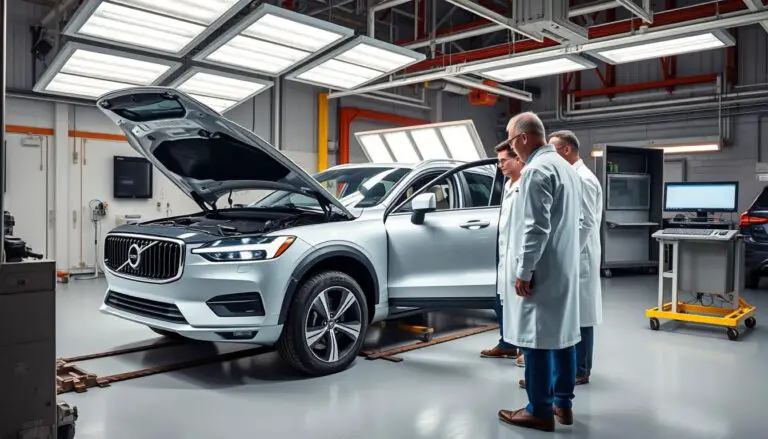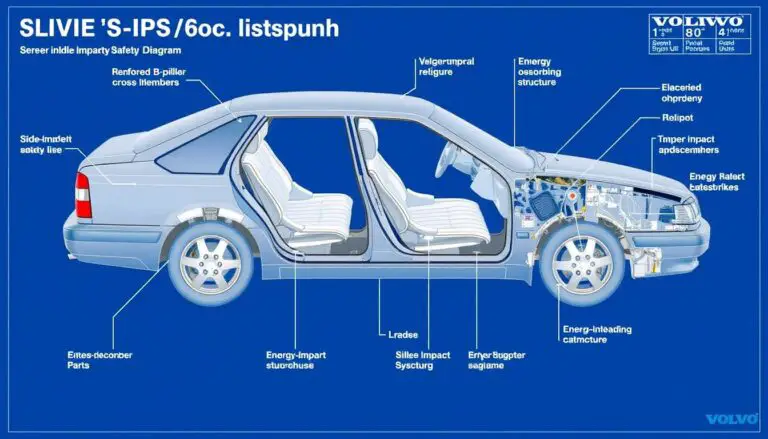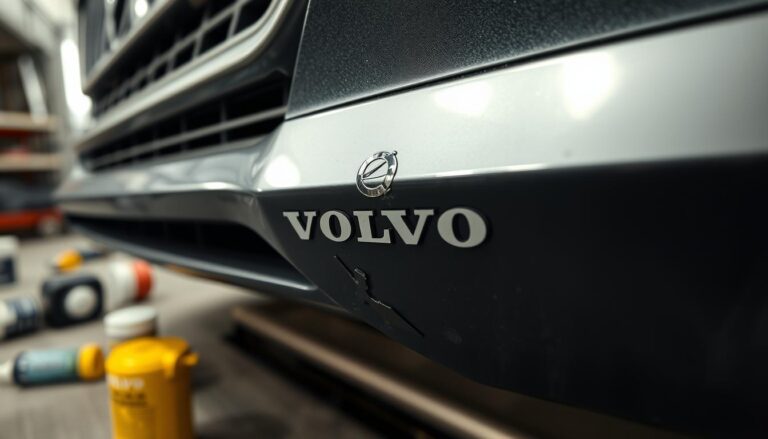This guide breaks down how average prices are built so you can make smart choices for your car. It explains why estimates vary by model, driveline, and where the vehicle is serviced.
Start with a clear diagnosis. Symptoms may mimic other systems, so testing protects your budget and avoids unnecessary work.
We outline the difference between light fixes and major rebuilds, and show what drives the final price: labor, parts, and shop overhead. A professional shop matters for safety when removal, reprogramming, or complex procedures are needed.
Use a free comparison tool to control price. MotorFyx analyzes reviews, certifications, and other factors to match owners with shops and display Google/Yelp reviews, warranties, and financing. Pro shops have verified certifications and a Relevancy Score to help you compare options.
This buyer’s guide previews current U.S. pricing, major cost drivers, long-term maintenance tips, and practical steps to get VIN-specific quotes and multiple estimates for peace of mind.
Key Takeaways
- “Average” varies by model, trim, and where work is done.
- Accurate diagnosis prevents wasted spending.
- Labor, parts, and shop overhead shape the final price.
- Free comparison tools can save up to 50% vs. dealership pricing.
- Verified shop info and reviews improve safety and confidence.
- Get VIN-specific quotes and multiple estimates for best value.
Current Volvo transmission price landscape in the United States
Current U.S. pricing shows wide variation across service types, from simple diagnostics to full assembly swaps.
Start with diagnostics. Many electronic or driveline issues mimic transmission failure in modern vehicles. A proper scan and road test can reveal much cheaper fixes than replacing the entire assembly.
Typical ranges for service types
- Diagnostic: basic charge to validate the complaint and scan codes.
- Service: fluid change or software update to address drivability problems.
- Repair: targeted component fixes or solenoid swaps.
- Full replacement: install a remanufactured or used assembly when needed.
What quoted pricing normally includes
Quoted price often bundles labor for remove-and-replace work, the parts or assembly, shop supplies, programming, and applicable taxes or environmental fees.
“Request a line-item estimate so you can compare labor, parts, programming, fluids, taxes, and fees before approving work.”
| Service Type | Typical Items Included | Labor Impact | Parts Options |
|---|---|---|---|
| Diagnostic | Scan, road test, report | Low | None |
| Service | Fluid, filter, software | Low–Medium | OEM fluids, filters |
| Repair | Component replacement, solenoids | Medium | New or reman parts |
| Replacement | Remove/replace, program, test | High (varies by models/years) | New OEM / reman / used |
Labor hours can swing widely where subframe drops or engine support are required. Dealerships may favor full assembly swaps, while independent shops sometimes pursue component-level repair to save owners money.
Tip: Ask for a written, itemized estimate and compare shops on labor rates, parts choices, warranty, and out-the-door fees.
Volvo Transmission Repair Cost: key factors that drive your final price
Start with a clear test. The most important step is an accurate diagnosis so you don’t pay for the wrong fix.
Accurate diagnosis first: issues that mimic transmission failure
Many electronic faults and simple components can mimic shifting problems. A bad wheel speed sensor, ignition misfire, or faulty solenoid can limit performance and trigger error codes.
Professional diagnostics protect you from paying transmission prices for non-transmission issues. Ask for scan reports and a road test before approving major work.
Repair vs. replace: when rebuilds give way to remanufactured units
Some leaks, valve body or solenoid faults can be fixed without a full unit swap. But on many newer models, manufacturers prefer remanufactured assemblies over internal rebuilds.
Labor hours, subframe drops, and why complex work needs pros
Access matters. Some vehicles need subframe support, suspension removal, or partial engine lift to extract the unit. That adds hours and specialized tools.
Model, year, and technology: how specific transmissions affect costs
Advanced 8-speed gearboxes, hybrid integration, AWD hardware, and mechatronic modules change parts pricing and labor time. Get a VIN-specific quote to compare true costs.
| Factor | Impact | What to ask |
|---|---|---|
| Diagnosis | Can avoid major work | Request scan and road-test notes |
| Access/Labor | High variance, adds hours | Ask if subframe or engine support is required |
| Parts source | OEM vs reman vs used affects warranty | Compare price and coverage |
Service intervals and maintenance that influence long-term transmission costs
A clear maintenance plan reduces surprises and spreads service needs across predictable intervals.
Example: For 2016-and-newer models a 100k service is often listed at $899.95. That package typically includes Engine Oil & Filter, Cabin Air Filter, Transmission Service, download full vehicle software, top off fluids, and a full vehicle inspection.
Regular services protect fluid condition, update software that can improve shifting logic, and catch leaks or mount wear early. These small actions lower the chance of major transmission events later.
Service content varies by years and vehicles. Lower-mile intervals focus on brake fluid and filters. Mid-mile intervals add spark plugs. Major milestones (150k) cover belts and tensioners that support drivetrain health.
- Keep written records of every service to preserve warranty and resale value.
- Tailor plans to driving conditions like towing or stop-and-go traffic.
- Ask for a written service menu so you know which part and inspection items are included.
“Clear service records and scheduled checks help shops make better decisions and protect safety.”
How to save up to 50% without sacrificing quality: using MotorFyx to compare shops
Finding the right shop can shave hundreds off a bill without giving up warranty coverage.
MotorFyx is free to browse and lets owners call or message shops directly. The platform shows AI Personalized Recommendations after you enter your make and model and describe your needs.
Independent shop pricing vs. dealership rates
Independent shops often offer lower pricing for the same category of repairs. That can mean up to 50% savings compared with dealerships while keeping quality and warranties you expect.
From request to results: AI Personalized Recommendations
Enter your vehicle details and the system ranks options by a Relevancy Score. The score factors in reviews, certifications, and verified services so you get tailored choices fast.
What the MotorFyx profile shows and why it matters
- Centralized site with Google/Yelp reviews, certifications, warranties, and financing.
- Call or message shops to confirm availability and schedule an appointment.
- Filter by price, proximity, and coverage to compare options and fees.
“Compare shops side-by-side and choose the place that matches your needs and confidence level.”
| Feature | Why it helps | What to ask |
|---|---|---|
| Relevancy Score | Matches experience to your model | Ask how the shop handled similar work |
| Verified Pro badge | Extra confidence in certifications | Request warranty and coverage details |
| Direct contact | Faster appointment and clearer estimates | Call to confirm schedule and fees |
For complex jobs, prioritize a transmission repair shop with verified experience. That reduces comebacks and protects your money, insurance claims, and long-term satisfaction.
Conclusion
A precise diagnosis is the single best tool to control bills and avoid unnecessary work. Start with a scan and road test so you compare real options, not guesses.
Remember: some models need subframe drops or engine support to remove the unit, and newer platforms often use remanufactured assemblies instead of in-house rebuilds. That affects parts, labor, and warranty choices.
Factor fees and out-the-door totals when you compare shops. Use MotorFyx to view reviews, warranties, financing, and VIN-specific quotes so you can pick a vetted shop that balances price, quality, and turnaround for your car.
With clear diagnostics, itemized estimates, and the right expert, you can manage transmission repair costs, protect value, and keep your vehicle running with proper care.
FAQ
What is the average Volvo transmission repair cost and what affects it?
Average prices vary widely by model and the service needed. Minor fixes like fluid changes or solenoid swaps typically run a few hundred dollars. Major repairs or rebuilds can be
FAQ
What is the average Volvo transmission repair cost and what affects it?
Average prices vary widely by model and the service needed. Minor fixes like fluid changes or solenoid swaps typically run a few hundred dollars. Major repairs or rebuilds can be $1,500–$4,000, while full replacements or remanufactured units often reach $3,000–$7,000 or more. Key drivers are parts, labor time, model year, and whether the shop uses OEM or aftermarket components.
How much should I expect to pay for diagnosis, basic service, and full replacement in the U.S.?
Diagnostic scans and road tests generally cost $80–$200. Routine service—fluid and filter—ranges $150–$400. Mid-level repairs, like valve body work or clutch packs, typically run $800–$3,000. A full unit replacement with a remanufactured assembly and labor often falls between $3,000 and $7,000 depending on engine type and vehicle model.
What does today’s pricing usually include: labor, parts, taxes, and shop fees?
Estimates should itemize labor hours, parts (OEM vs. aftermarket), shop supplies, and any disposal or environmental fees. Taxes and alignment or software programming charges may be added at checkout. Always request a written breakdown and ask whether warranties on parts and labor are included.
At what point is a repair considered a replacement for modern models?
A repair becomes a replacement when damage affects core components like the torque converter, internal clutches, or electronic control modules beyond economical repair. If repair costs exceed about 50–70% of the price of a remanufactured unit, most shops recommend replacement for reliability.
What common problems can mimic transmission failure and how important is an accurate diagnosis?
Problems like failing engine sensors, low fluid, clogged filters, or a faulty torque converter can produce similar symptoms. Accurate diagnosis prevents unnecessary work and higher bills. Request a full scan, test drive, and pressure tests before approving major repairs.
When should I choose a rebuild versus a remanufactured unit?
A rebuild can be cost-effective if internal wear is limited and the case is sound. Remanufactured units are better when multiple internal components are damaged or when you want a warranty-backed solution. Consider mileage, previous service history, and long-term ownership plans.
How do labor hours and subframe drops affect the price?
Labor can dominate the bill. Some models require subframe removal or engine support to access the transmission, adding several hours. Complex electronics and programming also increase labor time. Ask shops to show estimated labor hours and whether additional services like alignment are required.
How do model year and transmission technology influence pricing?
Newer models with 8- or 9-speed units, dual-clutch systems, or advanced electronic controls cost more to diagnose and fix. Older, simpler gearboxes are cheaper to service. Transmission design, access complexity, and availability of parts shape the final price.
What service intervals and maintenance reduce long-term expenses?
Regular fluid and filter changes, scheduled inspections, and prompt repairs of minor issues extend life and lower total costs. For example, a 100k maintenance visit that includes fluid exchange and software updates can prevent expensive failures later.
How can I save money without lowering quality when shopping for service?
Compare independent shops and dealerships for parts pricing, labor rates, and warranties. Independent shops often offer lower labor rates and flexible parts choices. Use comparison platforms to view reviews, certifications, and warranty terms to find trusted providers and save up to half on some services.
What should I expect from AI-based recommendation tools like MotorFyx?
AI tools quickly match your exact model to nearby shops, show pricing ranges, and highlight relevancy scores based on service history and certifications. They can speed up estimates and help you pick a shop that fits your budget and needs.
What does a Match/Relevancy Score mean for my car?
The score indicates how well a shop’s experience, parts availability, and certifications fit your specific model and issue. Higher scores suggest the shop has prior work on similar vehicles and access to required parts and diagnostics.
How important are reviews, certifications, and warranties when choosing a shop?
Very important. Reviews show real customer experiences. Certifications from ASE or manufacturer training demonstrate technical competence. Written warranties on parts and labor protect your investment. Prioritize shops that combine good reviews with clear warranty terms.
When should I choose a specialist transmission shop instead of a general mechanic?
Choose a specialist for complex electronic controls, remanufactures, or when a vehicle requires subframe removal and advanced programming. Specialists have dedicated equipment, longer warranties, and higher expertise for challenging jobs.
Can insurance or extended warranties help cover transmission work?
Some extended warranties and powertrain plans cover major failures. Standard auto insurance rarely covers wear-related mechanical failure. Review your warranty contract or contact your provider to confirm coverage and any approved-shop requirements.
What steps should I take before booking an appointment to reduce surprises?
Gather service records, note symptoms and when they occur, request a written estimate with parts and labor breakdown, and ask about warranty terms. Ask the shop about parts sourcing and software programming needs so there are no unexpected delays or fees.
,500–,000, while full replacements or remanufactured units often reach ,000–,000 or more. Key drivers are parts, labor time, model year, and whether the shop uses OEM or aftermarket components.
How much should I expect to pay for diagnosis, basic service, and full replacement in the U.S.?
Diagnostic scans and road tests generally cost –0. Routine service—fluid and filter—ranges 0–0. Mid-level repairs, like valve body work or clutch packs, typically run 0–,000. A full unit replacement with a remanufactured assembly and labor often falls between ,000 and ,000 depending on engine type and vehicle model.
What does today’s pricing usually include: labor, parts, taxes, and shop fees?
Estimates should itemize labor hours, parts (OEM vs. aftermarket), shop supplies, and any disposal or environmental fees. Taxes and alignment or software programming charges may be added at checkout. Always request a written breakdown and ask whether warranties on parts and labor are included.
At what point is a repair considered a replacement for modern models?
A repair becomes a replacement when damage affects core components like the torque converter, internal clutches, or electronic control modules beyond economical repair. If repair costs exceed about 50–70% of the price of a remanufactured unit, most shops recommend replacement for reliability.
What common problems can mimic transmission failure and how important is an accurate diagnosis?
Problems like failing engine sensors, low fluid, clogged filters, or a faulty torque converter can produce similar symptoms. Accurate diagnosis prevents unnecessary work and higher bills. Request a full scan, test drive, and pressure tests before approving major repairs.
When should I choose a rebuild versus a remanufactured unit?
A rebuild can be cost-effective if internal wear is limited and the case is sound. Remanufactured units are better when multiple internal components are damaged or when you want a warranty-backed solution. Consider mileage, previous service history, and long-term ownership plans.
How do labor hours and subframe drops affect the price?
Labor can dominate the bill. Some models require subframe removal or engine support to access the transmission, adding several hours. Complex electronics and programming also increase labor time. Ask shops to show estimated labor hours and whether additional services like alignment are required.
How do model year and transmission technology influence pricing?
Newer models with 8- or 9-speed units, dual-clutch systems, or advanced electronic controls cost more to diagnose and fix. Older, simpler gearboxes are cheaper to service. Transmission design, access complexity, and availability of parts shape the final price.
What service intervals and maintenance reduce long-term expenses?
Regular fluid and filter changes, scheduled inspections, and prompt repairs of minor issues extend life and lower total costs. For example, a 100k maintenance visit that includes fluid exchange and software updates can prevent expensive failures later.
How can I save money without lowering quality when shopping for service?
Compare independent shops and dealerships for parts pricing, labor rates, and warranties. Independent shops often offer lower labor rates and flexible parts choices. Use comparison platforms to view reviews, certifications, and warranty terms to find trusted providers and save up to half on some services.
What should I expect from AI-based recommendation tools like MotorFyx?
AI tools quickly match your exact model to nearby shops, show pricing ranges, and highlight relevancy scores based on service history and certifications. They can speed up estimates and help you pick a shop that fits your budget and needs.
What does a Match/Relevancy Score mean for my car?
The score indicates how well a shop’s experience, parts availability, and certifications fit your specific model and issue. Higher scores suggest the shop has prior work on similar vehicles and access to required parts and diagnostics.
How important are reviews, certifications, and warranties when choosing a shop?
Very important. Reviews show real customer experiences. Certifications from ASE or manufacturer training demonstrate technical competence. Written warranties on parts and labor protect your investment. Prioritize shops that combine good reviews with clear warranty terms.
When should I choose a specialist transmission shop instead of a general mechanic?
Choose a specialist for complex electronic controls, remanufactures, or when a vehicle requires subframe removal and advanced programming. Specialists have dedicated equipment, longer warranties, and higher expertise for challenging jobs.
Can insurance or extended warranties help cover transmission work?
Some extended warranties and powertrain plans cover major failures. Standard auto insurance rarely covers wear-related mechanical failure. Review your warranty contract or contact your provider to confirm coverage and any approved-shop requirements.
What steps should I take before booking an appointment to reduce surprises?
Gather service records, note symptoms and when they occur, request a written estimate with parts and labor breakdown, and ask about warranty terms. Ask the shop about parts sourcing and software programming needs so there are no unexpected delays or fees.



